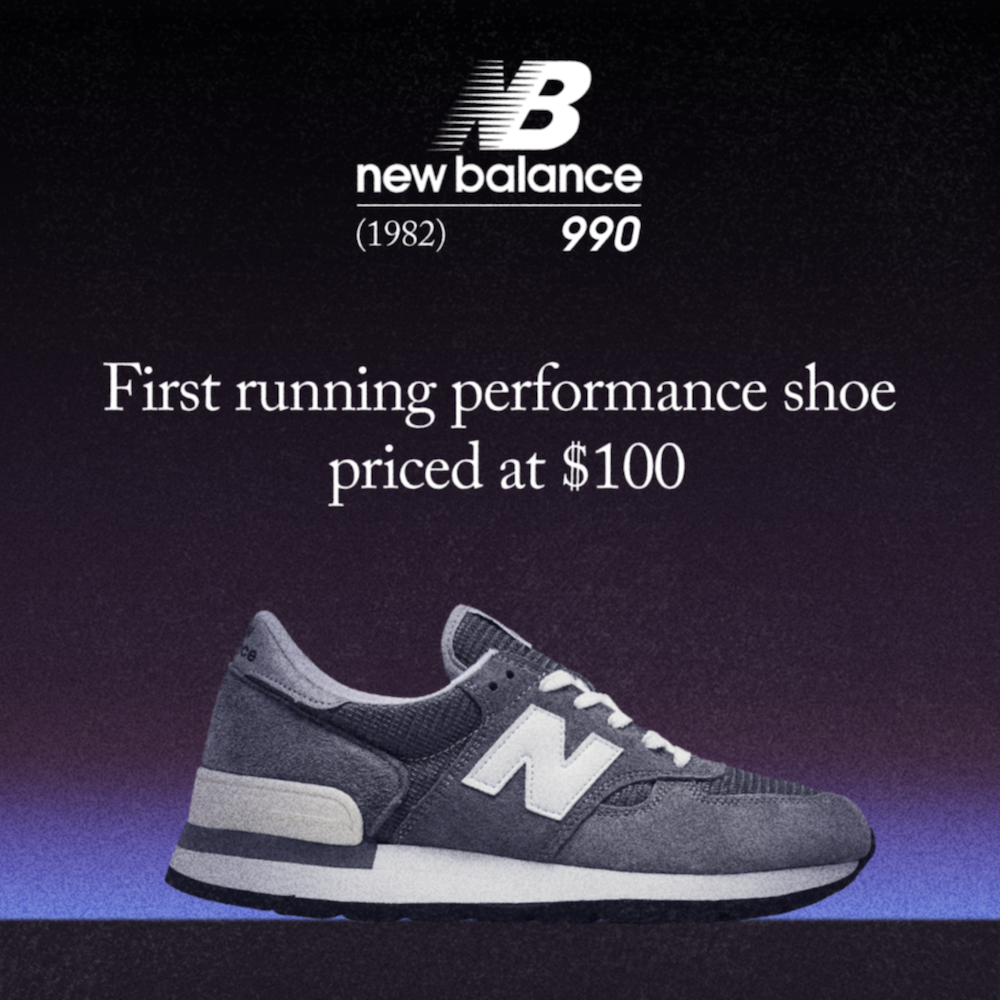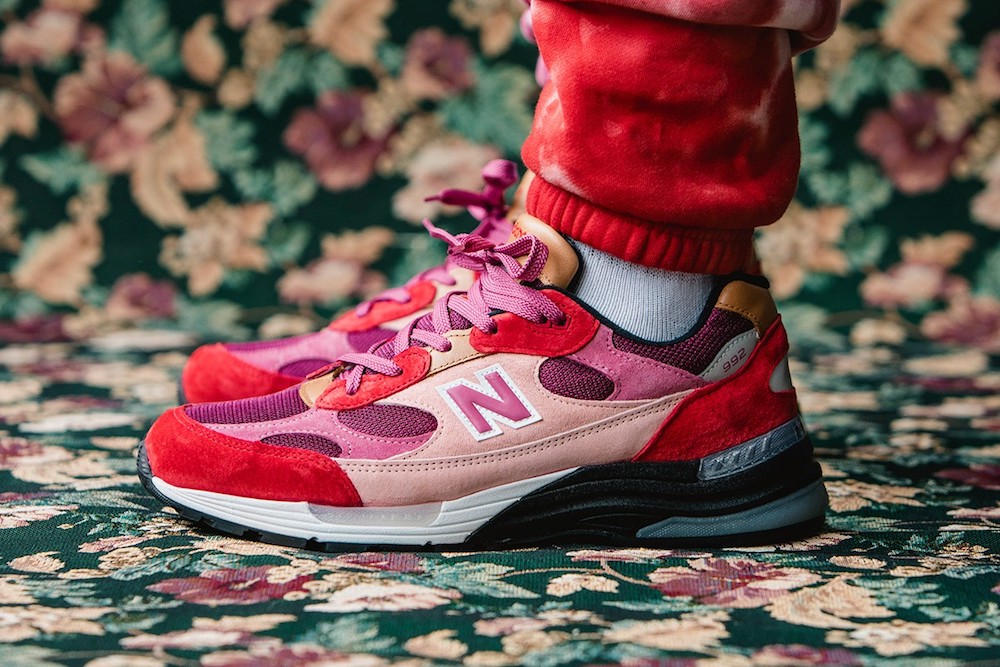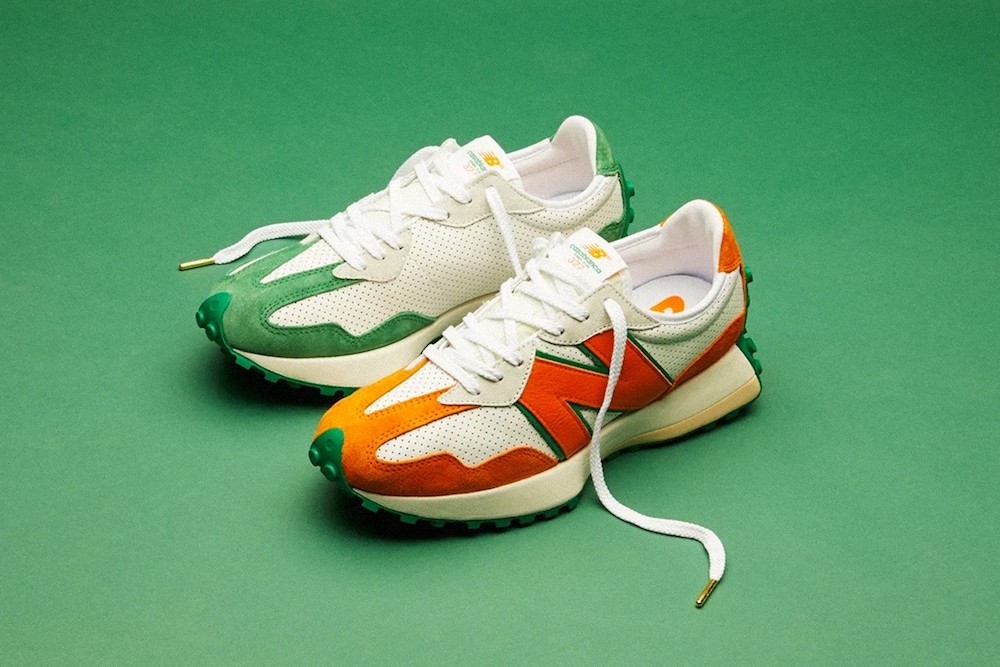Charles Etoroma looks back at the history of New Balance

The year 2020 will forever be marked by the rise of COVID-19 and the simultaneous chaos created across all global markets. While many brands, particularly in the footwear and apparel industry, are being forced to drastically re-think their future, one brand has quietly made their mark on 2020 – New Balance. The run doesn’t appear to be slowing down anytime soon with their slew of recent collaborations and reinterpreted archival drops.
In order to understand how they have been able to weather the storm and gain traction in the public eye we have to look back at the history of the brand and the strategic decisions made to prepare them for this moment.
The Humble History of New Balance
In 1906, William J. Riley founded New Balance Arch Support Company in Boston, Massachusetts. It is said he was inspired, after watching chickens roaming around his backyard, to create a product that helped support the arches of the human foot. This led Riley to design a shoe by starting at the bottom and working his way up, thus allowing function to dictate form.
Despite the core focus in footwear, it wouldn’t be until 1961, where that focus would shift to sneakers as a result of Riley’s daughter, Eleanor.At the behest of numerous athletes, Eleanor and her husband created the Trackster which, at the time, was the first running shoe with a rippled sole for added traction. The shoe slowly made its way around the running community in Massachusetts and eventually led to the buy-out from current chairman Jim Davis. This buyout would go on to elevate the brand from obscurity to a household name. To continue the original legacy focused on arch support, the brand began releasing shoes in different widths and adding numbers to the names of the shoes to signify main functionalities.
The Sprint Into Popular Culture
In 1982, 20 years after the first New Balance technical sneaker was born, a new experimental series was released to maintain the function while elevating the form. The 990 series’ launch marked the first time sneakers had ever crossed the $100 price threshold. The shoe, despite the high price point, became a huge success and exceeded sales projections by nearly 10X in six months. In achieving this feat, the 990 series became a new status symbol among sneaker aficionados as a direct result of the simple color palette and price point.

By the late 1980s, sneakers had cemented themselves as an important part of the business with the introduction of the 320, 620, 420, 670, 990 and 1300 series; but one of their most widely adopted came in 1988 with the release of the New Balance 574. The 574 was created to offer even more comfort to their technical line of shoes. The timeless design aesthetic and the balance between comfort, performance and affordability positioned the shoe as one of the best running shoes of the 80s. In 1993 and 1994 the New Balance 1500 and 1400, respectively, were created. The 1500s built upon the price tag boundary its 990 predecessor had set, and sold for $150. Again, despite the high price tag, they were quickly adopted and even sported by U.S. President, Bill Clinton, who preferred them while running. The 1400 which dropped a year later became one of the brand’s longest running shoe to-date and, along with the other models, has helped usher in a wave of revamps, partnerships and creations.
The Art of Strategic Partnership
Collaborations have become the life source for many of the brands in the apparel and sneaker world, with the likes of Virgil x Nike and Kanye x Adidas. In these collaborations, the hype of the big name helped to drive the awareness and the desirability of the product, but the team at New Balance has taken a different approach. In a recent interview with Highsnobiety, New Balance’s senior collaborations manager, Joe Grondin, said: “New Balance has changed the collaboration strategy quite a bit over the past couple years. We’ve gone from individual retailer-based projects to longer-term brand partnerships, which I think has brought new energy.”
This new energy is directly related to partnerships that align more with the values of the brand vs. the overreliance on “hype.” The 99x series has been the subject of some of the top brand partnerships with the likes of Concepts, Aime Leon Dore, WTaps, JJJJound, and Kith, all getting their opportunity to reinterpret the silhouette. While individually these brands don’t have the reach of a Kanye West or Virgil, each has a strong niche audience of die-hard fans that answer the call of any drop.

The introduction of new color schemes and strong repeat partnerships has been instrumental in growing the brand cache. This year alone has already seen an incredible slate of releases starting off with Joefreshgoods’ No Emotions are Emotions in early February. In late February, the sports world was shocked with the announcement that Kawhi Leonard had signed with New Balance. Kawhi, as known by NBA fans, is one of the best and quietest players in the NBA. He prefers to do his work on the court with as little words and showmanship as possible, which is emblematic of the New Balance brand as a whole.

March, meanwhile, gave way to the reintroduction of the New Balance 827 in collaboration with serial partner, Aime Leon Dore. Despite the success of all of those drops, the biggest surprise to the sneaker world was the introduction of the New Balance 327, which dropped in early May. The New Balance 320, originally born in the mid 70s, was the archival model that inspired the reinterpretation by UK designer, Charlotte Lee. When asked about her inspiration in a Highsnobiety interview, Lee said, “When creating this shoe, I wanted to make sure I was inspired by the past, but in a completely different way than was done before. I don’t want to create another shoe that looked like it was from the seventies.”

The design process began in late 2018 but no one could expect how quickly it would take off, especially Lee. She goes on to say, “I don’t think anything could have prepared me for the demand or the positive reaction, to be honest.” This demand led to a collaboration with Parisian brand, Casablanca and created a larger appetite for the distinct colorways that will be released throughout the year.

Quality Not Quantity
The biggest problem with collaborations in the modern era is the sheer number that happen, but the approach has been different at New Balance. The partnerships that have dropped are intentional and have breathed new life into old silhouettes instead of constantly trying to create something new from scratch. The focus is on the product above all else and each partnership is with a brand or person that symbolises the core value system. These values reinforce the strong legacy created along the way. Given the clear focus of the brand, it is no wonder why the New Balance product has been so well received, as each partnership upholds that legacy of “bottom-up” approach.
Brands like Nike and adidas still hold the dominance when it comes to the sneaker market but, if anything has been learned from the New Balance breakout in 2020, it is that their dominance may not last forever.